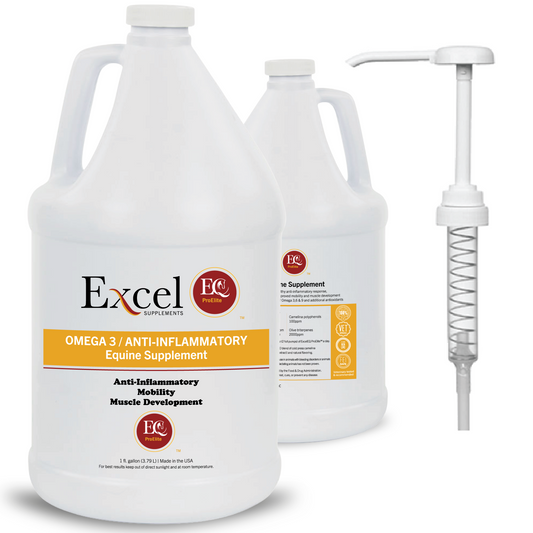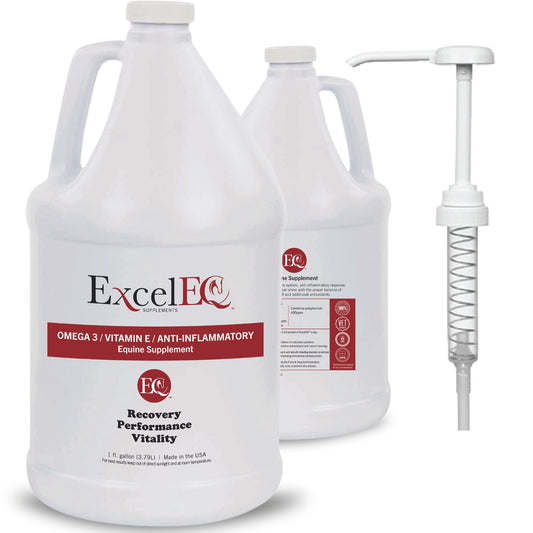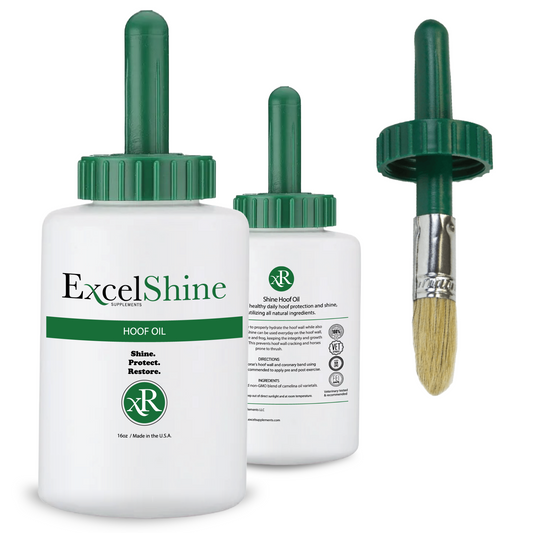What is Anhidrosis? Part 2: Diagnosis and Treatment Options for Horses
Share
In Part 1 of our Excel Supplements series on anhidrosis, we explored the nature of this condition and its causes. In this second installment, we focus on diagnosing, treating, and managing an anhidrotic horse effectively.
Diagnosing Anhidrosis in Horses
Understanding the Diagnostic Process
To accurately diagnose anhidrosis, it is crucial to consult with a veterinarian. Anhidrosis shares symptoms with various other conditions that can cause elevated respiration and heart rates. Your vet will start with a comprehensive physical exam followed by specific diagnostic tests. One key test involves injecting terbutaline or epinephrine to stimulate the sweat glands. These substances should prompt sweating if the glands are functional (The Horse).
After the injection, your vet will use absorbent pads to collect sweat over a 30-minute period. The amount of sweat produced will be compared to normal levels. If your horse shows minimal to no sweating, anhidrosis may be the diagnosis. A blood test may also be conducted to measure electrolyte levels and confirm the condition.
Managing Anhidrosis in Horses
Effective Management Strategies
Currently, no complete cure for anhidrosis exists. The most effective strategy for managing this condition involves moving your horse to a cooler climate. Cooler environments often help horses start sweating again (AAEP). However, relocating a horse is not always feasible. Therefore, managing anhidrosis through environmental and care adjustments is crucial.
-
Provide Shade and Ventilation: Ensure your horse has access to a stall, run-in shed, or other shaded area to escape direct sunlight. Installing a fan or mister can help keep the area cool.
-
Maintain Hydration: Always provide clean, cool water for your horse. Adding an electrolyte supplement to the water or grain can be beneficial. A salt lick is also a good addition, as it encourages water consumption.
-
Adjust Exercise Times: Schedule riding or work sessions early in the morning or late in the evening when temperatures are lower.
Treatment Options for Anhidrosis
Exploring Treatment Possibilities
While some alternative treatments have been studied, their effectiveness varies. Acupuncture and certain herbal treatments have shown short-term relief but often last less than a month (UFL Vet). Despite various supplements claiming to treat anhidrosis, there is limited scientific evidence supporting these claims (AAEP). Many commonly suggested remedies, such as dark beers or specific vitamins, have not proven to be consistently effective.
Several medical treatments, including prostaglandins, antihistamines, and adrenocorticotropic hormones, have been tested without success. Anhidrosis may sometimes resolve spontaneously, which complicates the identification of effective treatments (The Horse).
The Role of Beer in Anhidrosis Management
A traditional method for alleviating anhidrosis symptoms involves adding small amounts of beer to a horse’s grain. Beer is believed to provide yeast and B vitamins that may help stimulate sweating. When used in moderation, beer is generally safe for horses.
Conclusion
The exact cause of anhidrosis remains uncertain, making it challenging to develop definitive treatments. Ongoing research, including studies on sweat genes at the University of Florida, aims to provide more insights into potential solutions (AAEP).
Effective management of anhidrosis is crucial to preventing the condition from worsening. If your horse is anhidrotic, ensure that all caregivers understand the specific management needs. Keeping your horse hydrated and cool on a daily basis is essential for their well-being.
Stay tuned for more updates and tips on managing equine health with Excel Supplements.






